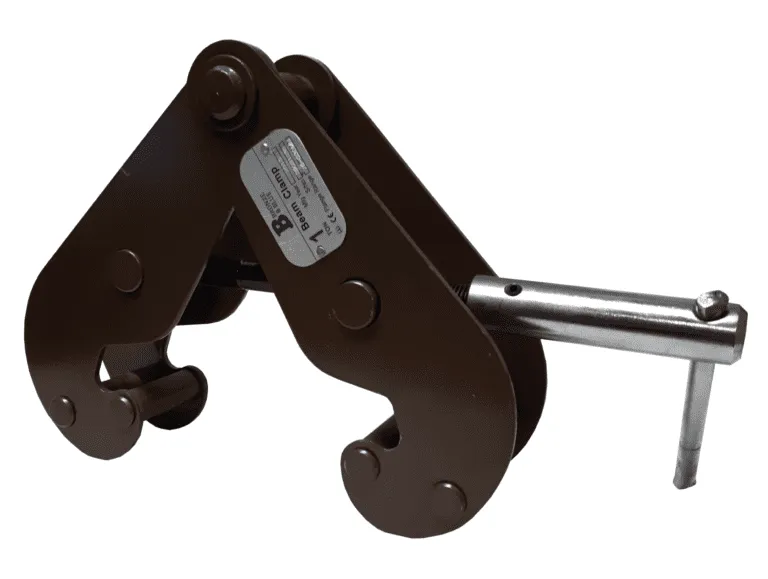Beam Clamp Service
Hercules SLR Beam Clamp Service: Inspection, Test, Maintenance, And Certification
 Beam Clamp inspection: Just like any other piece of lifting or rigging equipment, Canadian law requires that beam clamps undergo annual inspection and certification.
Beam Clamp inspection: Just like any other piece of lifting or rigging equipment, Canadian law requires that beam clamps undergo annual inspection and certification.
Hercules SLR provides ASME certified inspection, testing, and certification services for beam clamps.
Beam clamp safety standards are laid out in ASME B30 Standards, along with safety standards for other below-the-hook lifting devices.
The Canadian beam clamp service experts at Hercules SLR can thoroughly inspect, test, and certify beam clamps. Bring them to one of our shops or have our trained service professionals come to you.
Contact Canada’s beam clamp inspection, testing, certification, and repair experts at Hercules SLR today.
Frequently Asked Questions
How often should beam clamps be inspected?
– Normal Service—yearly
– Severe Service—monthly to quarterly
– Special Service—as recommended by a qualified person
What to look for when inspecting a beam clamp?
All structural and mechanical lifting devices must be inspected for the following:
– Loose bolts or fasteners
– Cracked or worn gears, pulleys, sheaves, sprockets, bearings, chains, and belts
– Structural deformation, cracks, excessive wear, or bends
– Loose or missing guards, stops, or nameplates
– Excessive wear of friction pads, linkages, and other mechanical parts
– Excessive wear at hoist hooking points and load support clevises or pins
– Missing or illegible product safety labels
What are the tag requirements for beam clamps?
– Manufacturer’s name
– Serial number
– Lifter weight, if over 100 lb (45 kg)
– Rated load
– Cold current (amps) (when applicable) rated voltage (when applicable)
Where can beam clamps be serviced?
Our experts can provide service on-site, or at one of our 30 facilities found across Canada.
What to know when doing an operational test on beam clamp?
– Lifters with moving parts shall be tested to determine that the lifter operates per manufacturer’s instructions. Lifters with manually operated or automatic latches shall be tested to determine that the latch operates following manufacturer’s instructions.
What to know when load testing on beam clamp?
– Before initial use, all new, altered, modified, or repaired lifting devices should be tested and inspected by, or under the direction of, a qualified person and a written report be furnished by such a person, confirming the load rating of the lifter. Test loads shall not be more than 125% of the rated load unless otherwise recommended by the manufacturer.
Beam clamp Inspection : more tips for safe usage
– Don’t exceed the SWL of beam clamp;
– Don’t exceed SWL of beam that the clamp’s secured to;
-Make sure the beam clamp is correctly and securely clamped to the beam and the centre line of the clamp suspension point is in alignment with the centre line of beam;
– Contact the beam clamp supplier before replacing bolts—this could lead to the wrong screw being fitted and may cause damage to the beam clamp;
– Ensure you’re using a certified beam clamp;
– Ensure a competent person is applying the beam clamp—a “competent worker or person” is defined differently in each province according to OH&S rules. British Columbia and Quebec are the only two provinces which don’t formally define what a “competent worker/person” is. Click here for the Canadian Centre for Occupational Health & Safety’s definitions of “competent” in each province or territory.
– If using two clamps in tandem, you may need to use ancillary equipment, like a spreader bar;
– Use beam clamps for vertical lifts only.

